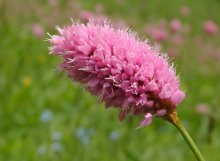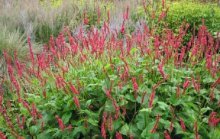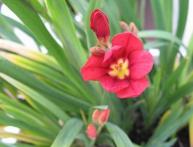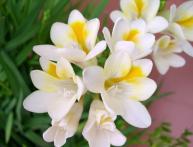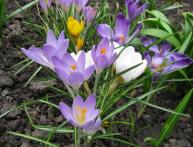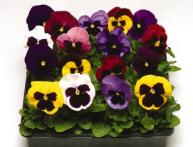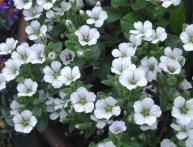Knotweed - a plant for home, garden and health
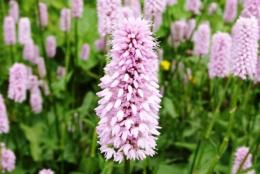
Knotweed is one of the few plants that have so many species that are radically different from each other. Annuals, perennials, creeping vines, and shrubs grow all over the world, and there are more than 300 species. Of these, 20 species have been cultivated, and they delight with their decorative properties.
Content:
Highlander
Highbush knotweed is used for landscaping the banks of reservoirs, hedges and for making silage for animals. The most popular of the tall species: Oriental, Sakhalin, Japanese:
- Eastern knotweed is an annual plant that grows up to 2 m in height and has large paniculate inflorescences. Flowers are red, pink, lilac or white. The leaves are green, oval, pointed at the ends. After flowering, black nuts are formed. Eastern knotweed blooms in late summer until frost. Easy to care for, loves nutritious and moist soil. Eastern knotweed grows both in the wild and in garden plots. In nature, it can be found in forests, steppes and meadows. As an ornamental plant, Eastern knotweed is actively grown in the Primorsky Territory and China.
- Sakhalin knotweed is a tall perennial plant with creeping roots. Height up to 5 m, branches straight, strong. The leaves are oval, up to 30 cm long and up to 25 cm wide. Flowers are collected in white panicles. Blooms in the second half of summer. Flowering period up to 45 days. The plant is very winter-hardy.It grows naturally on Sakhalin and Japan. It mainly grows on slopes and hills. In garden areas it is used to decorate old buildings, artificial ponds, and hedges. Residents of Sakhalin add young leaves to salads and soups. The plant is used as feed for cattle. Sakhalin knotweed quickly fills free territory, and many gardeners do not risk planting it on their plots.
- Japanese knotweed – tall bushy plant. The height reaches 5 m. The branches are hollow, cranked, very similar to bamboo stems. The leaves are green, medium in size, oval in shape. There are frequent veins throughout the leaf. The flowers are small, cream-colored, collected in panicles. Japanese knotweed blooms in early September. This is the fastest growing knotweed, allowing you to quickly create a hedge and hide the area from prying eyes. Tolerates pruning well. The branches can be used to weave baskets, vases and other crafts. This knotweed grows very quickly and is difficult to remove from the site.
Lowlander

Low-growing species of knotweed are used for planting in flower beds, decorating alpine slides and as borders. The most popular of the low-growing plants are: Capitate knotweed, Related knotweed and Viviparous.
Capitate knotweed is an annual plant that can quickly fill voids in the soil. Height up to 15 cm, branched, creeping. The leaves are small, green with red veins and spots. The inflorescences are small, cone-shaped, consisting of small pinkish-white flowers.
It is applied for gardening flower beds, trimmed borders and filling areas under trees. Grows well in both full sun and full shade. Most often propagated by seeds.Undemanding appearance, easy to care for. It responds to fertilizing with abundant flowering. Can be planted in a pot and used as a houseplant.
The related knotweed is a low-growing perennial native to the Himalayas. Plant height up to 25 cm. Leaves are long, lanceolate, green. Flowers in the form of dense spikes.
The color can be pink or red. The length of the inflorescences is 10-12 cm. The related knotweed begins to bloom in May and blooms throughout the summer season. After flowering, the leaves of the plant turn red. Loves moderate shady places, but can also grow in full sun. Does not require frequent watering and tolerates drought well. When water stagnates, rhizomes can rot.
High winter hardiness, but can freeze in the absence of snow. The related knotweed is very decorative, used in flower beds, alpine slides, for landscaping coastal areas, and fits well with other perennials. It grows well and can choke some plants.
Knotweed Viviparous is a perennial plant, up to 45 cm high. It looks like Snake Knotweed, but has a more decorative appearance. Stems are straight, bare. The leaves are hard, lanceolate, dark green. Inflorescence spike, with pale pinkish or red flowers. Blooms all season. In nature, Viviparous knotweed grows in the tundra, along the banks of rivers and lakes. The roots and flowers are eaten, added to salads, and made into tea.
Highlander - Baldzhuansky liana
Baljuan knotweed is a perennial vine that grows up to 12-15 meters. Used for vertical gardening areas. It blooms with small white flowers, which become pinkish when the air temperature drops. The leaves of the vine are dark green. The stems of an adult vine become woody.
Baljuan knotweed loves cool, damp places. Requires regular watering. In direct sunlight, the plant stops growing, the leaves curl and become smaller.
To make it decorative, the plant is often pruned and made into the necessary shapes. Haircut also stimulates the appearance of flower stalks.
Baljuansky knotweed tolerates frosts up to 23 degrees. Most often, vines freeze, the roots quickly recover and give new growth in the spring. This type of knotweed grows quickly and in a short time can add attractiveness to fences, gazebos and walls of buildings.
Medicinal Highlander
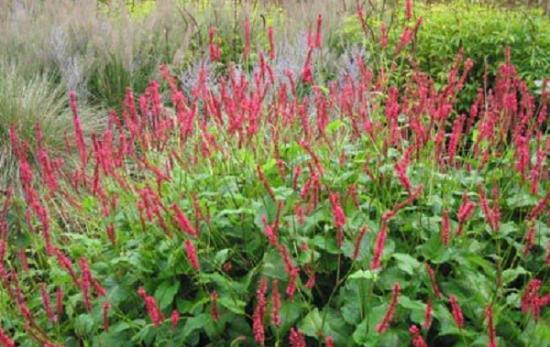
In folk medicine, knotweed is used to treat eye diseases, gout, heaviness in the stomach and intestines. It has a wound-healing, astringent and bactericidal effect. And this is not all the healing properties of the plant. For medicinal purposes, the most commonly used are Snake and Alpine mountaineers.
Snakeweed is also called Veal's Tongue, Crawfish Neck, or Adder's Grass. A perennial plant with a fistulous stem and small flowers. Flowers can be white, pink, crimson, and collected in an inflorescence - a spikelet.
Snake knotweed grows in sunny places and on moist soils. In nature, it can be found in meadows, fields, along river banks and on mountain slopes. The height of the plant is from 40 to 100 cm. In folk medicine, all parts of the plant are used: leaves, flowers, roots, seeds.
The maximum benefit comes from raw materials harvested in May. Highlander has a very strong bactericidal effect, quickly stops bleeding and relieves inflammation. Snake knotweed is used to treat diarrhea, stomach diseases, problems with the intestines, gall bladder, diseases of the throat, oral cavity, to treat purulent wounds and boils.
Alpine knotweed is popularly called Taran, Mountain knotweed, Kislets. It is a very ornamental weed. Lush bushes, up to 1.5 m high and up to 2 m in diameter. The stems of the plant are branched, especially in the upper part. The roots are powerful and creeping. The leaves are green, oblong. At the ends of the branches there are panicles of small white flowers.
Alpine knotweed blooms in July. In the wild it grows in forests, steppes and meadows. Quite unpretentious and grows quickly. On the site it is used to decorate old buildings and fences. Looks good cut.
Alpine knotweed is successfully used in folk medicine to treat stomach diseases, chronic diarrhea, hypertension and dysentery. Contains a lot of vitamin C and is used in the prevention of respiratory diseases.
The variety and diversity have made the knotweed a unique plant. There are species that have healing properties, some have a beautiful decorative appearance, there are valuable forage plants, and there are merciless weeds that are dangerous to plant in the garden. To avoid any unpleasant surprises after planting, when choosing a knotweed, you should carefully read the characteristics of each species.
Video about the medicinal properties of knotweed:
Interesting information about the vegetable garden

